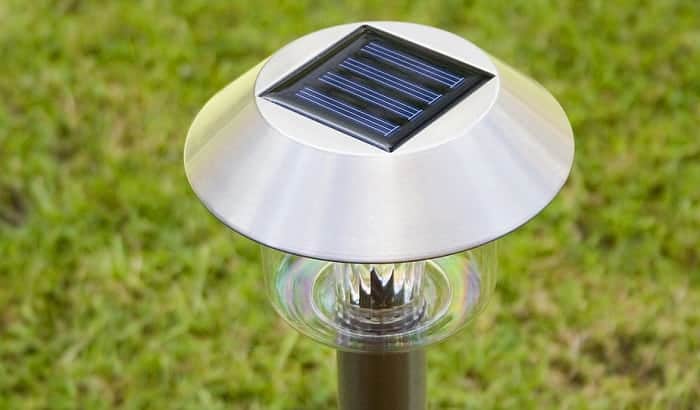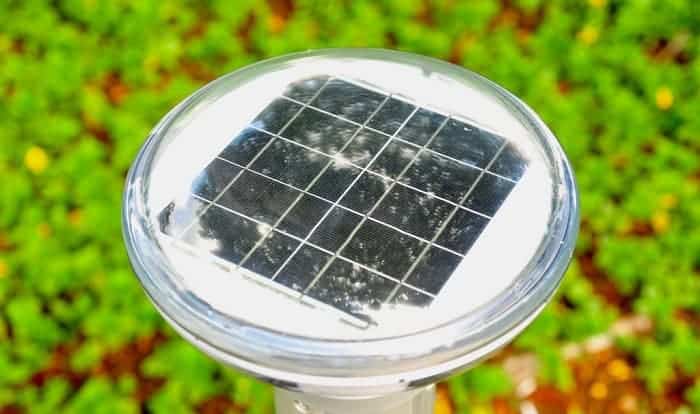Undoubtedly, using solar lighting products can offer homeowners plenty of benefits. But, using solar lighting systems is not always cloud nine.
The charging efficiency of solar panels is greatly affected by the weather conditions in the location where they’re installed. Hence, without enough sunlight, it would be impossible for them to provide adequate lighting at dusk.
Since we cannot guarantee that the weather condition in our area will always be sunny, what can we do when it’s gloomy outside? How to charge solar lights without sun?
Don’t worry, that’s what we’re going to tackle in this post. So, let’s get started!
Table of Contents
Can We Charge the Solar Panels Without Direct Sunlight?
The capability to store solar energy for use at dusk is something our ascendants must have dreamed about. And, the good news is that this has become a norm for many of us at present.
You’ll be amazed by how solar panels have transformed light technology. Gone were the days when we had to pay pricey electric bills to enjoy sufficient lighting at night.
Nowadays, we can delight in secured and safe lighting without breaking the bank. And, this is all thanks to solar lighting products. Unfortunately, regardless of how magnificent inventions are, they also come with a few cons.
Solar lights are straightforward to set up in locations where there is plenty of sunlight. They are pretty easy to operate. All you need to do is to ensure that the battery gets fully charged. Nonetheless, depending on your geographical location, weather conditions, and seasons, sunlight levels may differ.
This is one reason why we must be resourceful when charging our solar lights. Many of us are aware that weather conditions these days are unpredictable. So, we need to have a backup plan when the sun is out, and we have solar lights to take care of in our homes.
How Can You Charge Your Solar Powered Lights in Gloomy or Cloudy Weather Conditions?
Regardless of the weather, you can still obtain a full or decent charge for your solar-operated fixtures, depending on the size.
When it’s gloomy outside, solar panels are roughly 20% as efficient as they would be on sunny days. Notwithstanding, this is assuming that there are no cloud breaks during the daytime, which bh happens.
It is strongly suggested that you periodically dry your solar panels using a soft and dry cloth during inclement weather conditions. This is because precipitation could have an impact on the amount of light the solar panels are receiving. Indeed, this may bring about some damages, particularly if the units are not tightly sealed.
Aside from this, it is necessary to angle the solar powered fixtures to face the sunlight directly since this will optimize the charging efficiency.
Here are a few effective techniques on how to ensure getting as much charge as possible
Suppose you’re utilizing the solar panels in suboptimal weather conditions such as gloomy weather or artificial light. In that case, it is necessary to ensure that you are obtaining every ounce of energy available to you.
Hence, it is best to do what you can to optimize your lucky shot of a reasonable charge.
Keep your Lights at an Ambient Temperature
Temperature is one of the key elements that affect the capability of photovoltaic cells. Excessively high temperatures must be avoided. This is because extreme temperatures can reduce or impair the solar panel’s efficiency.
Consider that anything higher than 87-degrees F will result in a decline in the generation of electricity. So, when setting up your solar-operated fixtures, as much as possible, avoid positioning them on a dusky surface. This is because doing so will make the solar fixtures hotter during the daytime.
On the other hand, if you are using an indoor electric fixture to charge the solar panels, avoid positioning the solar fixture near the bulb. Otherwise, this may urge fire risk or might cause the light to get too hot.
Angle your Lights
Pointing your solar powered fixtures directly at an artificial light source or sunlight may provide you that little bit extra to optimize your charge. Sometimes, it isn’t always possible to shift a fixed solar-operated fixture that’s affixed on the wall or set up on a fence post. For that reason, you need to be more creative to find the perfect spot.
Fundamentally, the sun is perceived to be at its best during midday. So, it would be best if you took this in mind when moving the panels because this can significantly impact your batter charges. Don’t forget to re-position the solar panels in the afternoon and evening if you put them out in the morning.
If necessary, use mirrors to redirect sunlight to your solar-operated fixtures.
Essentially, if the solar panels are situated beneath a shadow, it is critical to position a mirror at close quarters. This technique is meant to allow the sunlight to reflect onto the solar panels. Use mirrors that are bigger than the solar panel’s size. This is to boost the possibilities of the solar panels to absorb more sunlight as feasible.
Be reminded, though, that this is not a very compelling solution; hence, it is ideal only if it’s impossible to move the solar fixtures into a more suitable position. Likewise, bear in mind that this technique also calls for re-positioning the mirror more often because the sun shifts quite instantly beyond the sky.
Keep the Solar Panels Free of any Dirt
Getting rid of any dust or filth from the solar panels will immensely help ensure that the light is not being obstructed. You can surely keep the solar powered fixtures in excellent working conditions if cleaned and inspected regularly.
Switch off the lights and allow them to charge more efficiently for roughly 72 hours.
When charging in indirect sunlight, be sure to switch off the lights and allow them to charge more efficiently for about 72 hours. It is worth noting that solar-operated fixtures charge more efficiently when they are switched off.
So, it is necessary to leave the solar lights outside in a location where they will still absorb more sunlight as possible. It is strongly suggested to perform this technique regularly. For instance, do it monthly.
This approach is ideal in terms of keeping the solar-operated fixtures working more efficiently. This method is called “deep charge” in the solar lighting field.
Can You Use LED Lights to Charge Solar-Operated Fixtures When You’re Away from Home?
Yes. You can utilize LED lights to charge a solar fixture when you are outdoors. LED lights that are operated by batteries are capable of charging solar fixtures. For example, you can use LED flashlights.
Using LED flashlights is regarded as one of the most efficient means to charge solar powered fixtures when access to indoor illumination is unavailable. For instance, you can use this technique when you are hiking, backpacking, or camping. Read more solar lights specifically for camping and outdoor activities here.
Please be guided that it is a must to charge the solar panels for a minimum of 10 to 12 hours if you choose to use a LED light.
Additionally, similar to using an incandescent bulb, this approach is merely practical if you are already utilizing a LED light for some other application. How fast your solar powered fixtures will charge using this approach primarily relies on the lights and specific model you are using.
When charging using incandescent lights, you can guarantee excellent results if you charge the solar panels for a minimum of 12 hours.
Final Thoughts
To wrap up, you have learned that there are several ways on how to charge solar lights without sun. And, the other valuable tips shared above when charging the solar lights can help you ensure more charging efficiency even when the weather is gloomy outside.

I am Kathleen Miller, staff writer and reviewer of the Avasolar team. Working with the team has been a pleasure for me so far, I hope to bring readers useful information by creating detailed and easy-to-follow contents.



